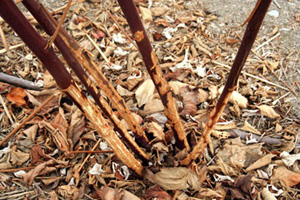Causes of this type of damage include:
Winter Injury – damages floricanes but not primocanes. Varietal differences are apparent. Often injury occurs in March when temperatures fluctuate, rather than in mid-winter. Occasionally, winter injury is not apparent until fruiting laterals begin to grow. With the onset of warm temperatures, the injured vascular connections cannot supply the laterals with water, so the laterals collapse.
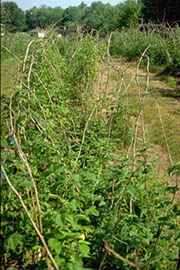
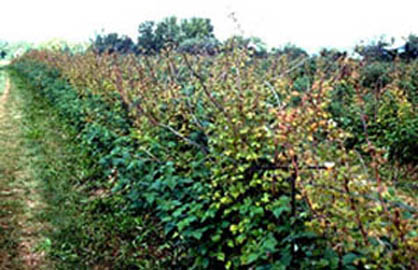
High Winds – can break floricanes at their base, causing them to wilt and die. Usually affected canes can be pulled from the crown with a quick jerk.
Crown Borers – damage floricanes at their base, causing them to wilt and die. Entire plants may be killed.
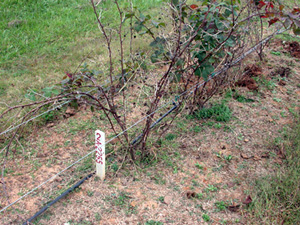
Photo courtesy D. Johnson, University of Arkansas
Look for burrows at the base of canes and in the crown and roots.
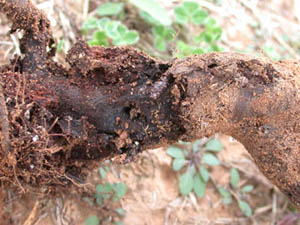
Photo courtesy D. Johnson, University of Arkansas
Adult crown borers are clear-winged moths that resemble yellow jackets. They emerge from July to September.
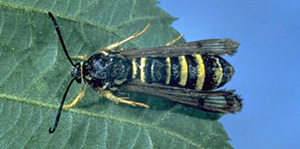
Photo courtesy D. Johnson, University of Arkansas
Crown borer eggs are laid singly on the undersides of leaves.
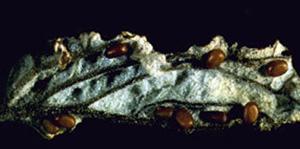
Photo courtesy D. Johnson, University of Arkansas
Larvae burrow down individual canes into the crown. A single larva may kill several canes on one plant.
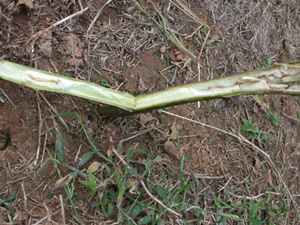
Photo courtesy D. Johnson, University of Arkansas
Dark red pupal skins attached to the lower section of canes/crown are also a characteristic sign of crown borer infestation.
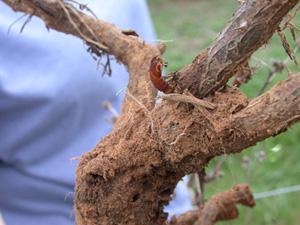
Photo courtesy D. Johnson, University of Arkansas
Rodent damage – In this case, rabbits stripped the bark from canes of these black raspberries during winter, girdling them.
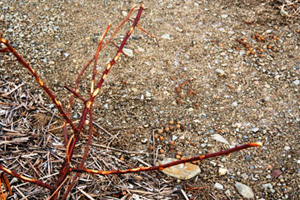
Similar rabbit damage on thornless blackberries.
